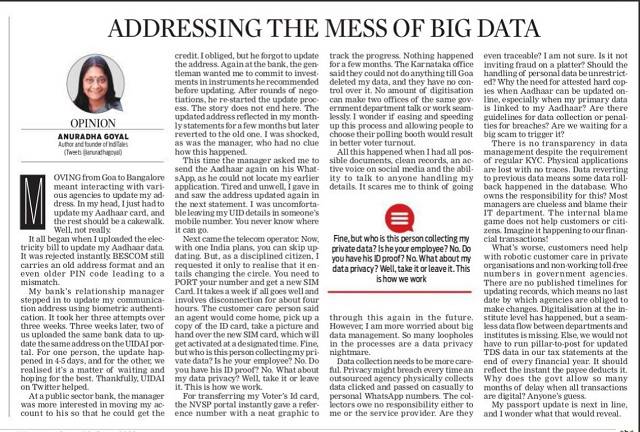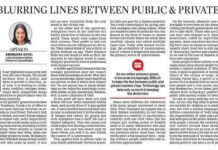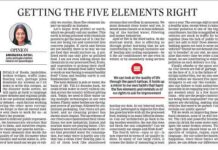Moving from Goa to Bangalore meant interacting with various agencies to update my address. In my head, I just had to update my Aadhaar card, and the rest should be a cakewalk. Well, not really. Big Data is not that simple to update.

Addressing The Mess Of Big Data
It all began when I uploaded the electricity bill to update my Aadhaar. It was rejected instantly. BESCOM still carries an old address format and an even older PIN code leading to a mismatch.
Banking Update
My bank’s relationship manager stepped in to update my communication address using biometric authentication. It took her three attempts over three weeks. Three weeks later, two of us uploaded the same bank data to update the same address on the UIDAI portal. For one person, the update happened in 4-5 days, and for the other, we realized it was a matter of waiting and hoping for the best. Thankfully, UIDAI on Twitter helped.
At a public sector bank, the manager was more interested in moving my account to his so that he could get the credit. I obliged, but he forgot to update the address. Again at the bank, the gentleman wanted me to commit to investments in instruments he recommended before updating. After rounds of negotiations, he re-started the update process. The story does not end here. The updated address was reflected in my monthly statements for a few months but later reverted to the old one. I was shocked, as was the manager, who had no clue how this happened.
This time the manager asked me to send the Aadhaar again on his WhatsApp, as he could not locate my earlier application. Tired and unwell, I gave in and saw the address updated again in the next statement. I was uncomfortable leaving my UID details in someone’s mobile number. You never know where it can go, intentionally or unintentionally.
Telecom Porting – Big Data
Next came the telecom operator. Now, with one India plan, you can skip updating. But, as a disciplined citizen, I requested it only to realize that it entails changing the circle. You need to PORT your number and get a new SIM Card. It takes a week if all goes well and involves disconnection for about four hours. The customer care person said an agent would come home, pick up a copy of the ID card, take a picture, and hand over the new SIM card, which will get activated at a designated time. Fine, but who is this person collecting my private data? Is he your employee? No. Do you have his ID proof? No. What about my data privacy? Well, take it or leave it. This is how we work.
Voters ID Card
For transferring my Voter’s ID card, the NVSP portal instantly gave a reference number with a neat graphic to track the progress. Nothing happened for a few months. The Karnataka office said they could not do anything till Goa deleted my data, and they have no control over it. No amount of digitization can make two offices of the same government department talk or work seamlessly. I wonder if easing and speeding up this process and allowing people to choose their polling booth would result in better voter turnout.
All this happened when I had all possible documents, clean records, an active voice on social media, and the ability to talk to anyone handling my details. It scares me to think of going through this again in the future. However, I am more worried about this data management. So many loopholes in the processes are a data privacy nightmare.
Data Collection
Data collection needs to be more careful. Privacy might be breached every time an outsourced agency physically collects data clicked and passed on casually to personal WhatsApp numbers. The collectors owe no responsibility either to me or the service provider. Are they even traceable? I am not sure. Is it not inviting fraud on a platter? Should the handling of personal data be unrestricted? Why is there a need for attested hard copies when anybody’s Aadhaar can be updated online? Especially when my primary data is linked to my Aadhaar. Are there guidelines for data collection or penalties for breaches? Are we waiting for a big scam to trigger it?
Lack of Transparency
There is no transparency in data management despite the requirement of regular KYC. Physical applications are lost with no traces. Data reverting to previous data means some data rollback happened in the database. Who is responsible for this? Most managers are clueless and blame their IT department. The internal blame game does not help customers or citizens. Imagine it happening to our financial transactions!
What’s worse, customers need help with robotic customer care in private organizations and non-working toll-free numbers in government agencies. There are no published timelines for updating records. This means no last date by which agencies are obliged to make changes. All you can do is apply and pray for it to happen within a reasonable time.
Go Digital
Digitalization at the institute level has happened. However, a seamless data flow between departments and institutes is missing. Otherwise, we would not have to run pillar-to-post for updated TDS data in our tax statements at the end of every financial year. It should reflect the instant the payee deducts it. Why does the govt allow so many months of delay when all transactions are digital? Anyone’s guess.
My passport update is next in line, and I wonder what that would reveal.
First published in The New Indian Express on Jun 18, 2023









Sounds very frustrating, and incredibly time consuming. Though I think in this “fragmented” Indian system, requiring manual interventions, it’s harder to steal a lot of data. At the other end of the spectrum, with instantaneous encrypted data transfers between gov’t agencies and private businesses is the MoveIt breach that was revealed last week, so far, almost 100 organizations in 14 countries have been affected. The article linked below discusses the impacts in the USA, but British Airways, BBC, and lower profile organizations in other countries are also affected, for e.g. our local Metro Transit Police in Vancouver. At the root of the problem is human greed, I don’t know if it’s possible to protect ourselves from this, especially as AI chat-bots get better at seeming trustworthy.